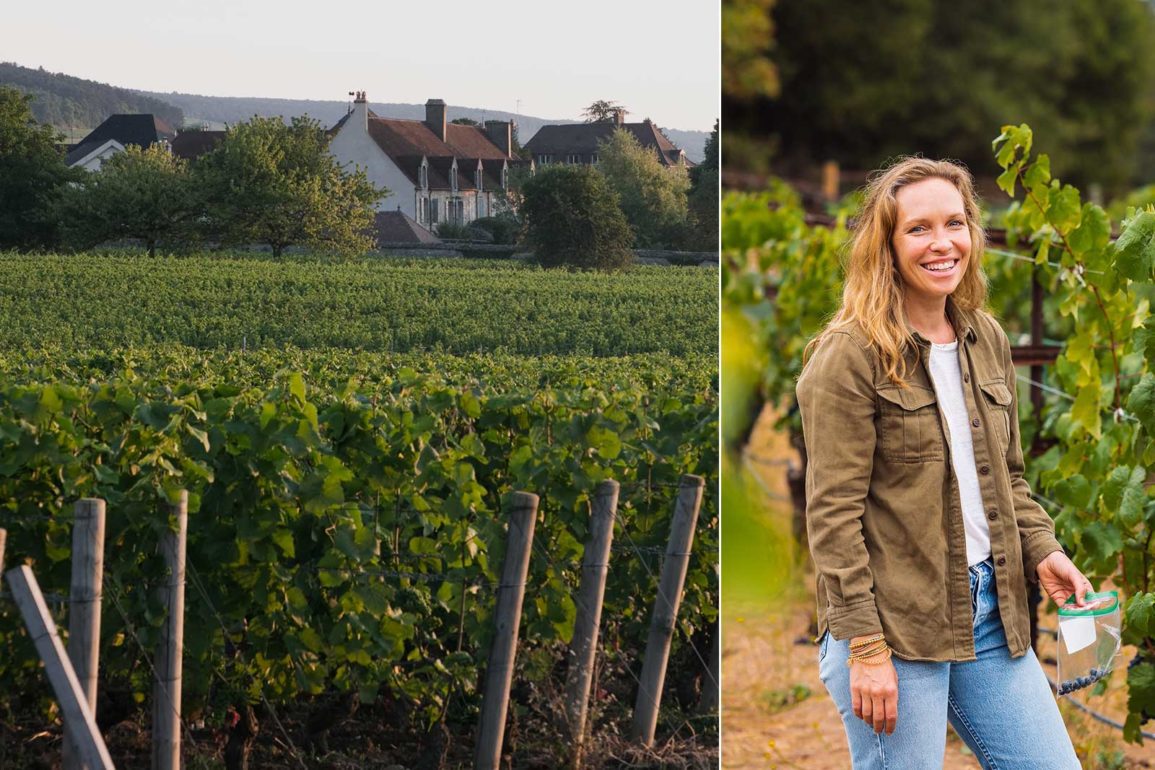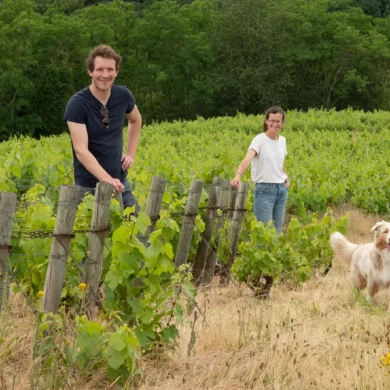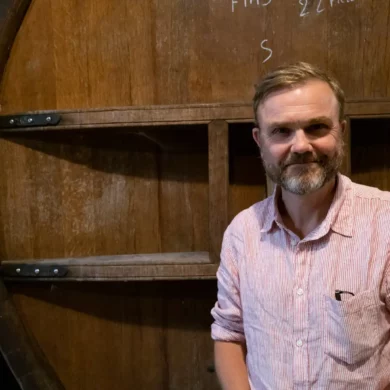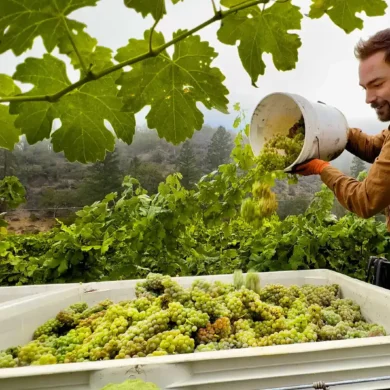We recently hosted a different sort of virtual wine class here at Opening a Bottle. Four Stories of Sustainability in Wine was an in-depth look at how climate change and the global economy threatens wine businesses, and how four exceptional producers have adapted their winery operations to endure these times and even thrive a bit.
One of these wineries is the highly regarded Domaine Dujac, whose prized Burgundy wines have not only been among the most sought-after in collectors’ markets — they’ve cultivated a pop-culture awareness thanks to hip-hop artists like Jay-Z and DJ Khaled. Despite all of that buzz, the Seysses family is down-to-earth yet simultaneously relentless in running an operation dedicated to meticulous quality and the highest environmental ethics and sustainability practices.
Domaine Dujac first caught my attention on this topic a few years ago when the winery’s American-born enologist — Diana Snowden Seysses — wrote an article for SevenFifty Daily provocatively titled Carbon Capture During Fermentation Could Make Wine a Negative-Emission Industry. I was not only struck by the ambition behind her idea, but the tenacity she was showing in trying to find a way to implement it.
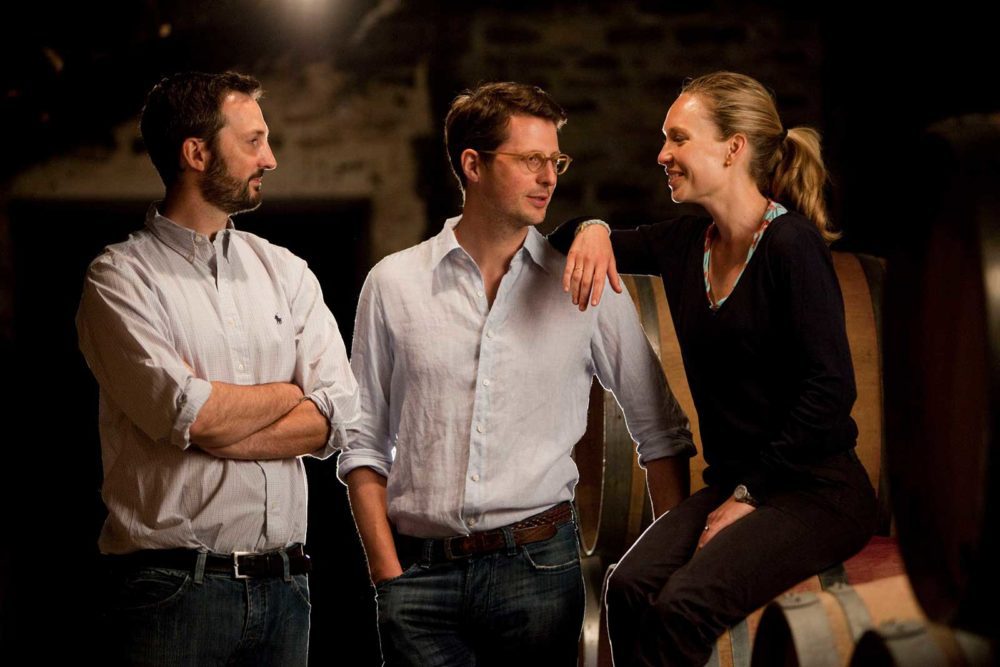
I have not had the good fortune of visiting Domaine Dujac, but our past contributor, Ashley Hausman MW, interned there in 2019, an experience she shared a few years ago here on Opening a Bottle. Through my contacts, I was able to arrange an interview with Snowden Seysses to inform that portion of the virtual wine class. As promised, below is a more complete transcript of our conversation. We covered what keeps her up at night, what gives her hope, what Burgundy and its producers need to do to adapt to climate change, and how her ambitious plan to capture carbon during fermentation — despite fits and starts — won’t go away.
The interview has been edited for clarity and length.
Reasons for Concern and Optimism
Kevin Day: What aspect of climate change keeps you up at night, and what aspect of the fight makes you optimistic?
Diana Snowden Seysses: It has been a process. There have been different phases. Climate change has always been on my radar, but I became rather obsessed with it after the 2017 fires [in Napa and Sonoma]. And really, it was after that first heatwave over Labor Day weekend in Napa …
As an enologist, my job is to do research. Jacques [Seysses] has always wanted to do trials. So I get to spend a lot of creative time thinking about how we might toy with things, how we might move our quality forward. I just started spending all of that time applying myself towards catching up on exactly where we are with regards to climate change.
“What brings me hope is changing our mode of living and how we are becoming, collectively, more and more aware of the concept of sustainability.”
Diana Snowden Seysses
Enologist, Domaine Dujac
There are times when one piece of data would send me to bed and I couldn’t cope with the world until I digested it. There were periods that were really, really tough. Everyone needs to digest the information to get out of denial, to understand thoroughly the current situation we are in.
At this stage [sighs], I have kind of figured out how to live with it. I continue to read the International Panel on Climate Change reports — which come out several times a year — and statistically speaking, we know where we are going. Somehow, it is not keeping me up at night anymore. I have just accepted all kinds of dread and I’ve accepting loss. And I am trying my best to stay present to the moment.
Really, I don’t feel shocked when atmospheric rivers come. I know that there is a 30% chance every year in California that there will be rainstorms that create floods like this. Ironically, California is a place that is both flood-prone and drought-prone. We are going to find ourselves in a drought situation in very little time because most of it is falling in low-lying areas and most of it is going to end up in the ocean. I know this is going to happen. There is no point in losing sleep over it.
But what brings me hope is changing our mode of living and how we are becoming, collectively, more and more aware of the concept of sustainability. And we are moving on an individual level, too. You know, Putin’s war in Ukraine has a silver lining, in that since it started, governments have really stepped up their green energy investment. We’ve collectively made so much progress in the last two years in terms of investment in green energy. That’s what moves me forward. No single event is purely bad or purely good. But collectively, we are all moving towards a goal that is actually sustainable. I see that happening, and it brings me a lot of hope.
Kevin Day: That’s a great message for those of us who — despite caring deeply about this — are feeling a bit numb to the overwhelming negative news around climate change because, well … it seems so easy to let hopelessness create a cycle of inactivity, right?
Diana Snowden Seysses: Yes, and it is just not useful. I think the way I’ve learned to cope with what we’re facing is to be — well, I’m ruthless with my energy. When I catch myself in a cycle of worry, I have to tell myself to deal with whatever’s in my sphere of control, because the energy is so precious. Sometimes I’m better at it. Sometimes I am less good at it. But that’s how I have to face it.
Keeping Pace with Climate Change in the Vineyard
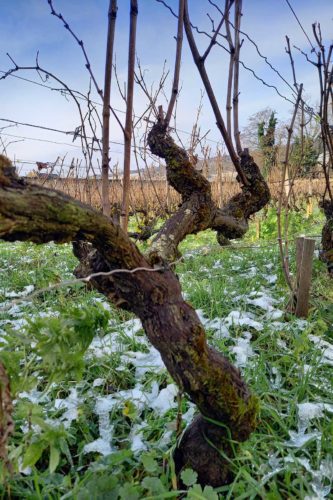
Kevin Day: Do you feel that your efforts in the vineyard have been able to keep pace with the dramatic changes in Burgundy’s climate? What other practices have you experimented with to build resiliency in your vineyards?
Diana Snowden Seysses: Certainly, the laws that are imposed on us by the appellation system are going to have to be reconsidered because it is warmer.
As to our practices, we have been making changes both for resiliency and for carbon mitigation. I am really excited that we are no longer burning our pruning cuttings. Burgundy was late to make that change, while a lot of California has been chipping or composting for a long time. We are now composting them and will add it to the vineyard three years later after it has digested a bit. So that’s great. It is, however, still the same carbon dioxide that is released, whether it is composted or burned, but the problem with burning is that it is terribly polluting. Those are carcinogens. [Composting] is an improvement in terms of pollution.
We’ve also dramatically reduced tillage and that is just since last year. We are now doing just one rip down the row [per vintage] for all of our vineyards. Before that, we were doing it in the spring and throughout the growing season. That’s a big deal in terms of carbon storage in your soils. That said, we’ve just started this, so if it feels like we’re getting too much growth in the fruiting zone, we reserve the right to go in a second time as necessary. But one rip down the row [per vintage] is our hope.
There are arguments that reduced tillage actually helps the vine be more resilient because you reduce the temperature of the soil and less heat is then bounced back into the fruiting zone. We will see if this helps us deal with increased heat or not. And then just the obvious one is leafing less. Everyone is going to have to leaf less because you need shade on the clusters now.
Kevin Day: It seems like there is a lot of give-and-take between what’s best for the soil and the vines, and what reduces your emissions the most, correct?
Diana Snowden Seysses: It is hard looking at any certain practice to fully take in its impact, because if you are looking just from the perspective of greenhouse gases, frequently you are going to end up polluting quite a lot.
I’ve heard the argument — by people who really care about greenhouse gases and carbon dioxide emissions — that it is better to be “sustainable” to use Roundup over organic because you are making fewer tractor passes. Tractors, of course, are fueled by diesel, which is terrible [from an emissions standpoint]. But Roundup, as we now know — and there are studies that prove this — degrades soil, kills worms, it is a carcinogen, it is probably causing allergies for people — which is to say our employees. And these vineyards go right up to local schools. So if you are looking at a carbon audit on paper, [Roundup] looks better because of the fewer tractor passes. So that’s just one example of this give-and-take.
On Carbon Capture at Fermentation
Kevin Day: In 2021, you wrote an article about capturing carbon during fermentation. You noted that you planned to do this at Dujac’s newly built winery with the 2022 vintage. Were you able to do that and if not, what stands in the way?
Diana Snowden Seysses: We had the first vintage in our new winery in 2022, and unfortunately, no, we did not capture carbon because we barely had the winery done in time, and the plumbing for CO2 was just not quite right. So we are readjusting it, and hoping to do it for 2023.
There was another problem I discovered in that what is currently on offer is not strictly speaking “sustainable.” However, it is a technology that is evolving rapidly right now. At some point we are going to have some slick scrubber that we can just slide in and convert our CO2 into something. But for the moment, it is complicated, it is labor-intensive, and it is not yet actually sustainable. I won’t go into the chemistry of it here.
I am going to update my Porto Protocol Case Study because since that was written I have found a bunch of companies that are doing carbon capture and I am going to make that available to colleagues. It is on my to-do list.
“In the wine community, there is a huge awareness about the threat of climate change. We depend on a stable climate and grapes don’t like dramatic weather events.”
Kevin Day: How about interest in this across the wine sector?
Diana Snowden Seysses: Through Porto Protocol I did a workshop for an hour and a half. I brought in four companies to talk about their installations and we had about 150 attendees from wineries all over the world. There is a lot of interest.
In the wine community, there is a huge awareness about the threat of climate change. We depend on a stable climate and grapes don’t like dramatic weather events. So yes, I think there is a real, concerted interest in the possibility of carbon capture because it is negative emission, and that is exciting. As is no-till practices and permanent cover crop: you’re putting away carbon in your soil.
Kevin Day: As wine industry insiders, we often hear about these efforts in the wine world, but what about the greater agricultural sector? Do you feel there is sufficient crossover of these ideas and practices being done at a greater scale in other agricultural fields?
Diana Snowden Seysses: Well, the regenerative farming movement is definitely gaining momentum. And that’s putting carbon away in soils and you can see that in a lot of places now. As for carbon capture [technology], you see that a bit in dairy. They are now talking about collecting methane. Breweries collect CO2 and have done so for a long time. They use it to carbonate their beer, which is very cool because if you think about our fizzy beverages, the carbon dioxide that will go into sparkling water comes from petrol, which is kind of disgusting. [Breweries] are taking their own carbon dioxide from fermentation and using it to carbonate beer before bottling.
Building a Sustainable Winery
Kevin Day: Lastly, can you tell me a bit about the new winery building at Domaine Dujac and how it was built with sustainability in mind?
Diana Snowden Seysses: First of all, we had to make it safe. The existing winery was too small and working in close quarters is dangerous. So it is about four times bigger.
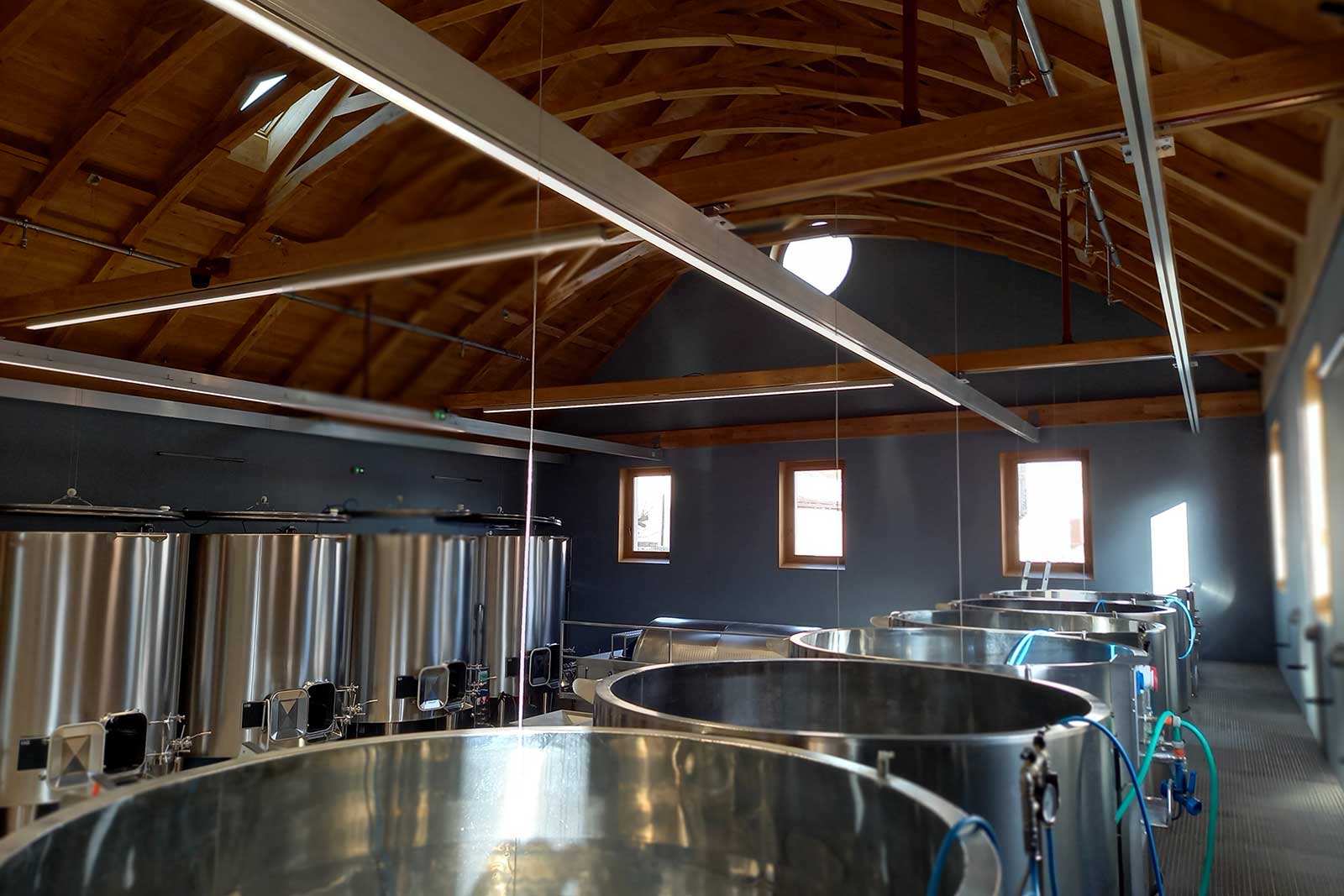
Whenever you are trying to create a sustainable building, you are working within the context of where you are. So we had a building that had specific dimensions and we decided to take advantage of this fully. To the extent possible, we used regenerative materials. Now, you cannot get a building permit without having cement foundations — so that was out of our hands. On the other hand, all of the structure is made of French oak, and all the insulation is of Burgundian straw. The insulation of the building is excellent, so you diminish the need to heat or cool off everything.
“Sometimes reducing your greenhouse emissions feels like paying your mortgage with coupons.”
Sometimes reducing your greenhouse emissions feels like paying your mortgage with coupons. Case in point, we have raw brick in the cellar. By virtue of being raw, you are eliminating the firing stage of ceramic, which is that much less CO2 into the atmosphere. Also, we were told that these raw bricks keep the cellar at a better humidity level naturally. So we will see how that pans out.
We did not have any solar panels on the new building because we do not have a south-facing roof. We would have loved to, but it wasn’t in the cards. However, Domaine de Triennes, which is also family-owned [by the Seysses family] in southern France is covered in solar panels.
We couldn’t do geothermal. It was not possible because there was no empty space to put in such a system. So in the end, we have some things we are really excited about, and we have some concessions we had to make. I think anyone going into a construction project — and anyone going into a mindset trying to be as sustainable as possible — has to cut themselves some slack because sometimes that desire to be perfect will cause burnout.
Increase Your Wine IQ: Join Our Virtual Wine Classes
From How to Identify Wine Flaws to a Deep Dive on Sicilian Wine, our Virtual Wine Class Series has built a passionate following from a community of wine lovers.
To attend any of these sessions, subscribe to Opening a Bottle for just $5/month or $49/year. You’ll be able to join future wine education classes on Friuli-Venezia Giulia and Chablis, unlock hundreds of wine reviews written with the care attention the wines deserve, and support independent wine writing.
